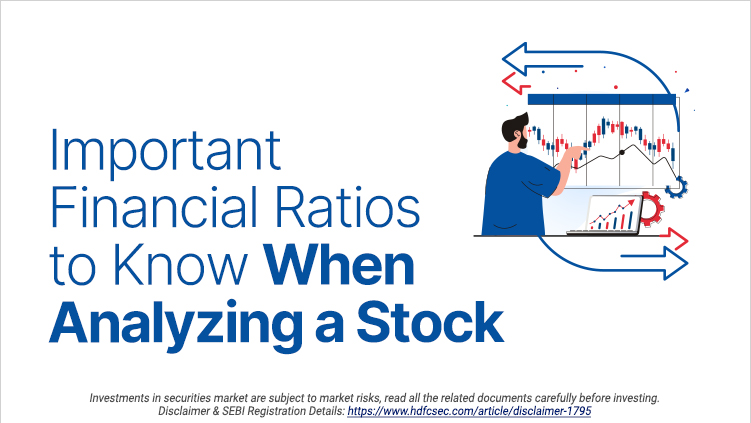Important Financial Ratios to Know When Analyzing a Stock
Investing can be a rewarding activity when done correctly, particularly equity investments which can be beneficial in the long term. As an investor, selecting stocks for a portfolio can often be a difficult task. There are several approaches through which one can analyze and select stocks to add to their portfolio. One such approach is using financial ratios. Financial ratios are a popular tool for assessing and evaluating a company’s financials, and there are several important financial ratios to consider when analyzing a stock. Here are some of them:
Price-to-earnings ratio (P/E ratio)
Price-to-earnings ratio can help find out the stock’s valuation in reference to the earnings per share. It signifies how much money investors are willing to pay for a single share of a company for Re 1 of its earnings. This financial ratio is calculated by dividing the company’s stock price by its earnings per share. A high P/E ratio could indicate that the stock may be overvalued, while a low P/E ratio could indicate that the stock is undervalued.
Price-to-book ratio (P/B ratio)
The price-to-book ratio is used to compare a company’s current market price to its book value. It is calculated by dividing the company’s stock price by its book value per share. The book value per share is calculated by dividing the company’s total assets minus its total liabilities by the number of outstanding shares. With the help of this ratio analysis, investors can know the company’s valuation in comparison to its assets and liabilities.
Debt-to-equity ratio
This ratio is calculated by dividing a company’s total debt by its total shareholders’ equity. It is helpful in financial ratio analysis as it helps investors know how reliant a company is on debt financing. A high debt-to-equity ratio indicates more debt and the inability to generate sufficient profits.
Return on Equity (ROE)
The ROE ratio analysis helps in measuring the profitability of a company in relation to its shareholders’ equity. It is calculated by dividing a company's net income by its shareholder equity. It is used to gauge how efficiently a company is utilizing its equity to generate profits. Generally, a higher ROE is better, as it means the company is generating more profit for its investors.
Dividend yield
This financial ratio reflects the amount of dividend that a company pays out to its shareholders relative to its stock price. It is calculated by dividing the annual dividends given per share by the stock price of a share. A high dividend yield could indicate that the company is returning a significant portion of its profits to shareholders in the form of dividends.
These are a few of the many financial ratios that can be useful when analyzing a stock and making an informed investment decision. However, no single ratio should be considered in isolation when making investment decisions. It is also important to consider other factors, such as the investor’s risk profile, before investing.
Related Posts
Don't miss another Article
Subscribe to our blog for free and get regular updates right into your inbox.
Categories
newsletter
 HSL Mobile App
HSL Mobile App 



